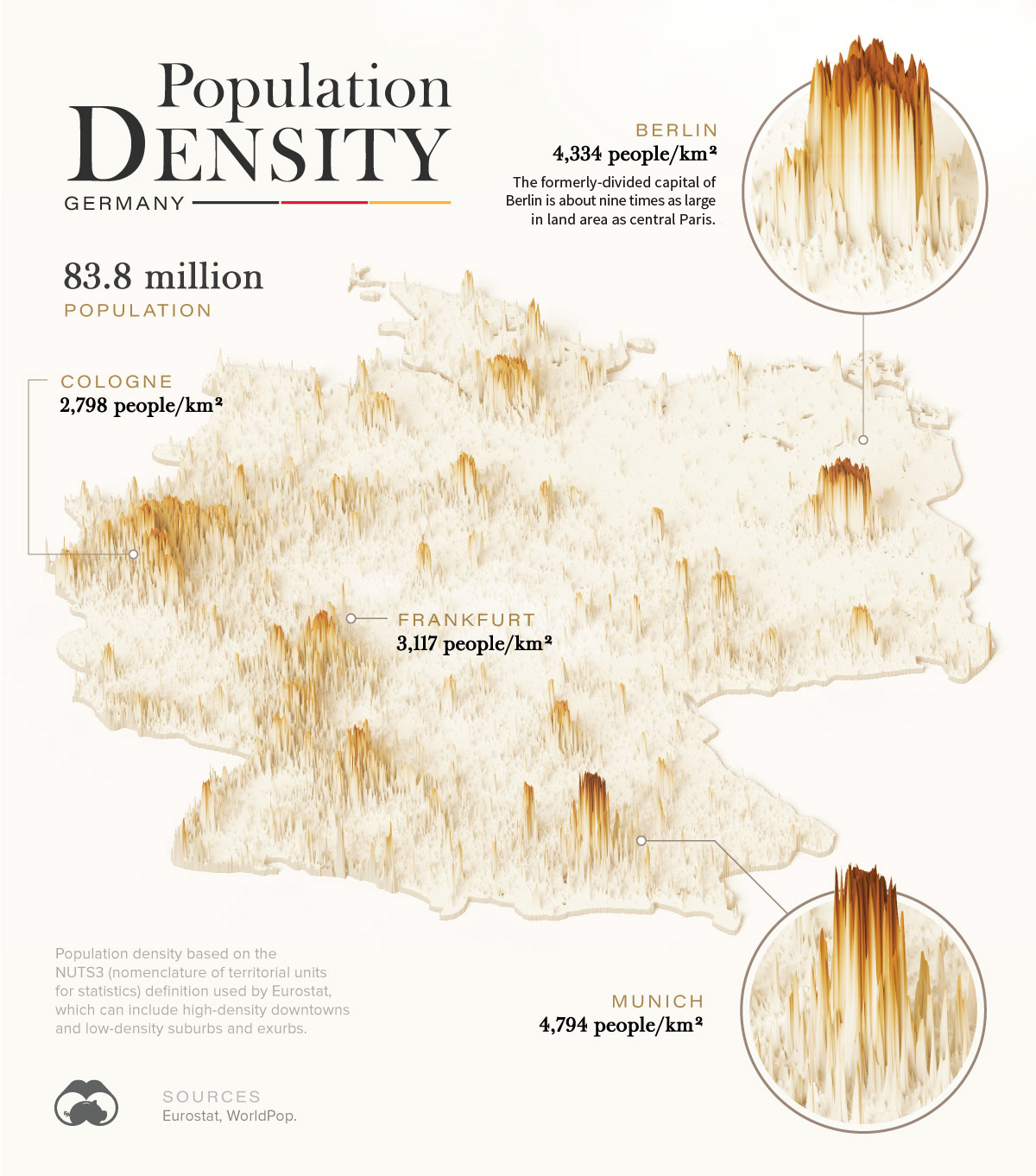![]()
See this visualization first on the Voronoi app.

Use This Visualization
Mapped: The Population Density of Germany
This was originally posted on our Voronoi app. Download the app for free on iOS or Android and discover incredible data-driven charts from a variety of trusted sources.
With a population of 83.8 million, Germany stands as the European Union’s most populous country and largest economy.
Yet with one of the lowest birth rates globally, Germany faces a demographic crunch as the population ages and public pension costs soar. To meet the skilled-labor gap, net migration has averaged 400,000 annually, primarily driven from southern and eastern European countries.
This graphic shows the population density of Germany, based on data from various sources.
Ranked: The Most Populous Cities in Germany
Today, Germany is home to three cities with a population of over one million people, operating as central regions for economic activity and trade:
| Rank | City | 2024 Population Estimates |
|---|---|---|
| 1 | Berlin | 3,426,354 |
| 2 | Hamburg | 1,739,117 |
| 3 | Munich | 1,260,391 |
| 4 | Koeln | 963,395 |
| 5 | Frankfurt am Main | 650,000 |
| 6 | Essen | 593,085 |
| 7 | Stuttgart | 589,793 |
| 8 | Dortmund | 588,462 |
| 9 | Duesseldorf | 573,057 |
| 10 | Bremen | 546,501 |
Berlin, its biggest city, is a vibrant metropolis that attracts creative types and serves as a cultural melting pot.
Across the capital, key industry clusters include healthcare, media, and mobility. It is also a leading tech hub in Europe, with startups flocking to the city after the global financial crisis. Part of the draw of Berlin lies in its affordable rent and dynamic food, arts, and culture, which has attracted venture capitalists and startups alike, including HelloFresh and SoundCloud.
Beating out Berlin as the most densely populated city in Germany is Hamburg. As a leading European industrial region, Hamburg is home to roughly 600 industrial companies that employ over 120,000 people. Major industrial heavyweights including Airbus and Hapag-Lloyd are headquartered in the city, which boasts a GDP of $164 billion.
Beyond these cities, the Rhine-Ruhr region is the most populous in the country, with 14 million residents. The broader metropolitan area includes Cologne, Essen, Dortmund, and other major industrial cities. The region’s history of being at the heart of vital trade routes laid the groundwork for industrial activity and economic expansion.
Overall, western Germany has the most densely populated areas, driven by economic and migratory factors. After the fall of the Berlin Wall, over 1.7 million citizens moved to the west by 2006.
While this trend is no longer happening today, it makes a notable impact on the composition of the labor force. Given these baked-in factors, 23 regions in eastern Germany will lose a fifth of their working-age population by 2035. On a wider level, the country is projected to see its working-age population decline by four million in the coming decade.
The post Mapped: The Population Density of Germany appeared first on Visual Capitalist.